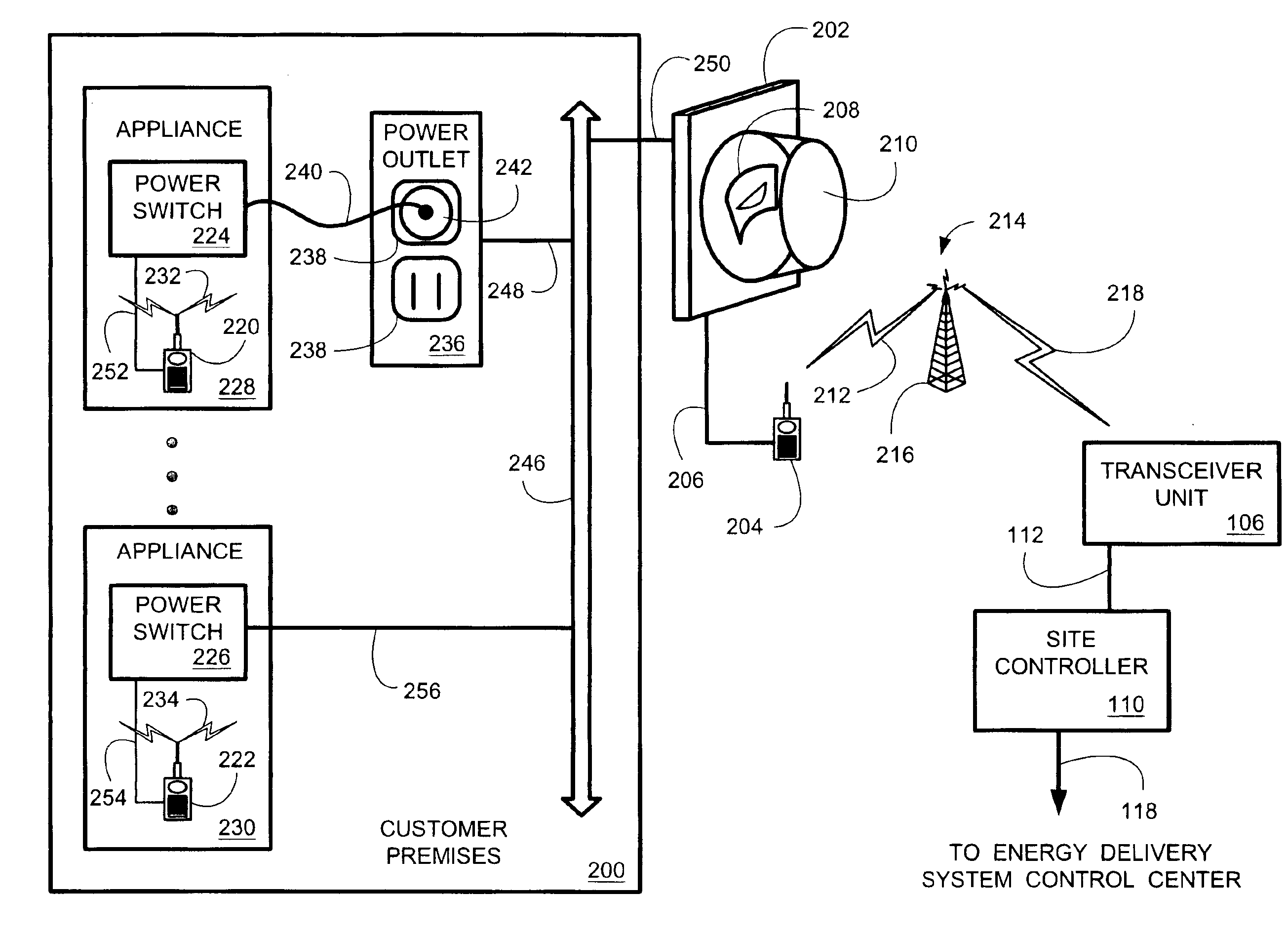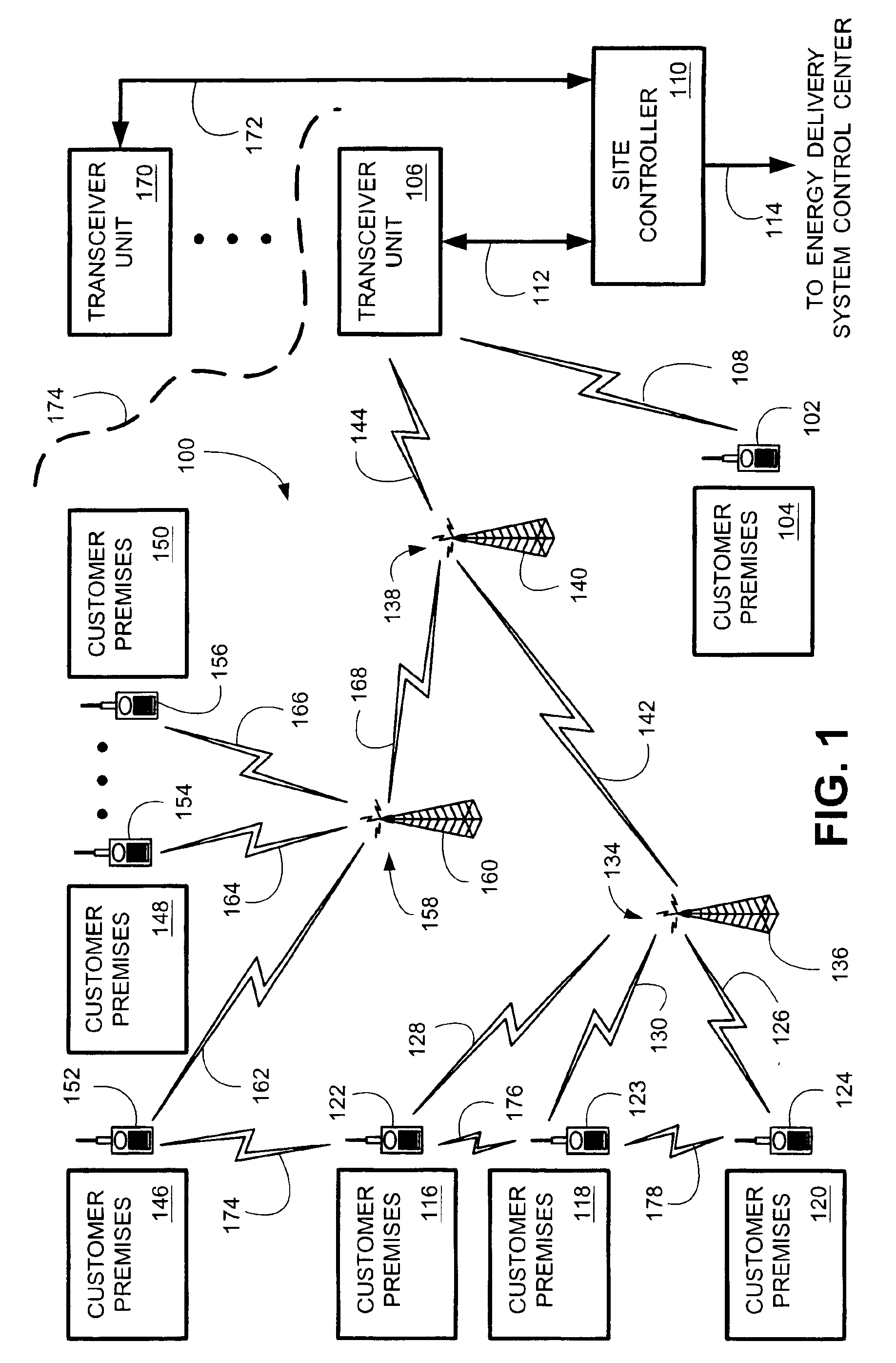One of the well known difficulties in providing electricity to customers is precisely matching the aggregate amount of electricity consumed by all of the customers on an instantaneous basis with the amount of electricity generated and / or purchased by the providing
electric utility or other responsible organization.
That is, at any instant in time, the electric utility or other responsible organization must provide exactly the amount of electricity used by all of the customers (plus the associated
transmission system losses).
Failure by the electric utility or other responsible organization to exactly match the electric demand of their customers with the supply (generation and purchases), during every instant in time, may have very undesirable consequences should the mismatch become significant.
When significant mismatches between demand and supply occur, distortions in the electric system frequency occurs.
Furthermore, other electricity characteristics may be undesirably distorted, such as
voltage, such that other types of protective relays begin to operate.
For example, if the electric utility or other responsible organization loses a generator in an unplanned manner, the electric system demand will exceed supply (because the supply decreases when the generator shuts down).
Although the action of the frequency sensitive relays effectively arrests the undesirable frequency decay, thereby saving the
energy delivery system from a more severe decay in frequency and other undesirable associated problems, those customers that were disconnected are impacted in an undesirable manner.
The affected customers are inconvenienced when they are disconnected from the energy
delivery system, and the affected customers did not volunteer to be selected as participants in the
load shedding scheme.
Furthermore, the electric utility or other responsible organization loses the associated sales to the affected customers, thereby negatively impacting the electric utility's or other responsible organization's revenue
stream.
However, this is not a very effective technique for reducing demand.
The 6 kW decrease in demand does not provide a meaningful demand reduction because the demand decrease is too small to be of practical help in matching demand of the entire system with supply.
Also, the cost of the RF receivers is not likely justifiable for so little of a demand reduction.
However, such
energy demand reduction systems employing a plurality of RF controlled load blocks have numerous problems and deficiencies.
Once a load block is established by configuring an
RF communication network to provide a unique shut-off
signal, and after a sufficient number of selected appliances are fitted with RF receivers responsive to the shut-off
signal, it is difficult to revise, update and / or modify the load block.
Furthermore, making significant changes to an established load block will take a considerable amount of time to implement.
Another problem associated with conventional RF controlled load blocks arises from the statistical nature of loads serviced by an
electric power distribution system.
Furthermore, the
thermostat settings will not be the same for all of the residences.
The electric utility or other responsible organization cannot know with certainty exactly how much load is shut off when the shut-off
signal is sent out to the RF receivers.
Another related problem arises from the nature in which the loads are metered (measured).
However, five
air conditioning units not part of the load block may cycle on at substantially the same time that the shut-off signal is transmitted to the load block (a probable event if the substation is providing service to a large number of homes on a hot day).
But, the electric utility or other responsible organization will not know the exact amount of demand reduction realized when the load block is shut off.
Yet another problem with demand reduction systems employing fixed-size load blocks is that it is difficult to readjust changes made in demand, or to fine-tune the demand changes actually realized.
Thus, a load block designed to statistically provide a 10 MW demand reduction cannot be easily reconfigured to provide a 12 MW demand reduction.
Furthermore, if a 10 MW demand reduction is desired, the load block designed to statistically provide a 10 MW demand reduction will probably never provide exactly a 10 MW demand reduction.
If, for example, the load block provides an actual load reduction of 9 MW, there is no convenient and effective mechanism to fine tune the
energy demand reduction system or the load block such that an additional 1 MW demand reduction can be ordered.
Thus, a heretofore unaddressed need exists in the industry for providing a demand reduction and
control system that accurately indicates the true amount of demand reduction realized when a shut-off signal is transmitted.
Also, there is a heretofore unaddressed need in the industry to provide a demand reduction and control system that provides for real time adjustment of demand on an appliance-by-appliance basis.
There is also a heretofore unaddressed need in the industry to automatically detect failure of RF receivers so that repairs can be initiated.
 Login to View More
Login to View More  Login to View More
Login to View More 


